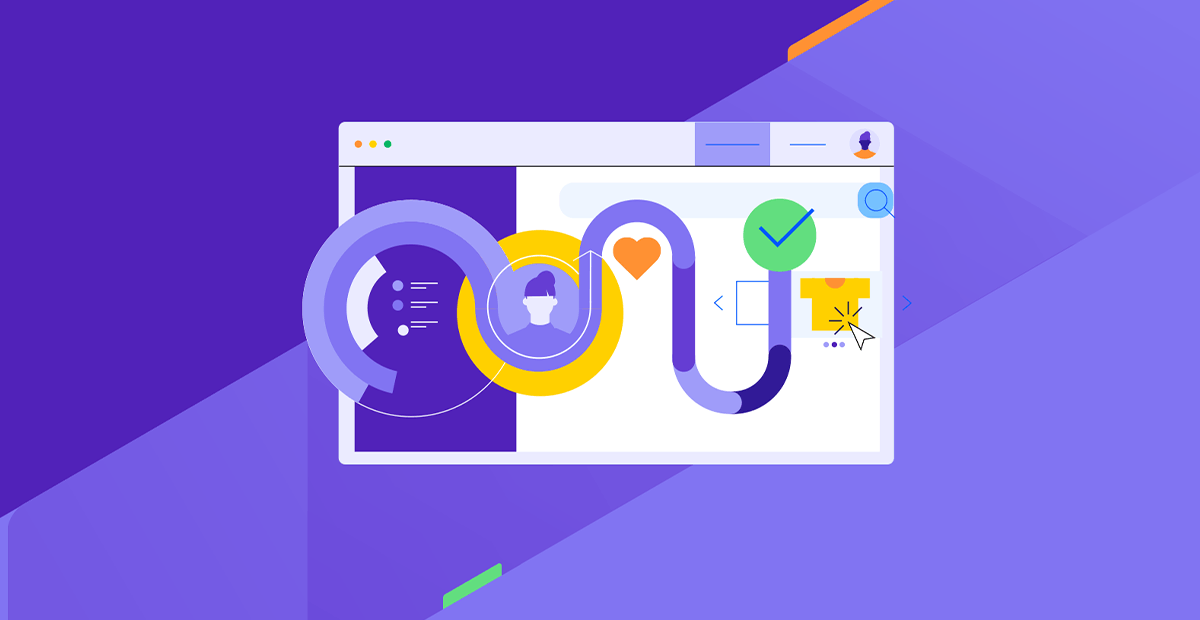Making Your DXP Accessible: What Businesses Need to Know

Accessibility isn’t just about compliance or avoiding lawsuits. It’s about inclusivity and building experiences that empower all users.
Picture this: You’re browsing the web, looking for information or trying to make a purchase. Now imagine facing barriers that prevent you from accessing the content you need. It’s frustrating, right? Unfortunately, this is a reality for many individuals with disabilities.
World Bank estimates that over 1 billion people which is about 15% of the world’s population live with some form of disability. And according to Pew Research, the likelihood of going online differs depending on a person’s disability status, with individuals in the U.S with disabilities three times more likely than those without disabilities to say they never go online.
What’s more, stats have shown that 90% of websites are inaccessible to people with disabilities who rely on assistive technology with 96.3% of homepages having detectable Web Content Accessibility Guidelines (WCAG) 2 failures. These discrepancies highlight the unique challenges faced by individuals with disabilities when it comes to accessing the digital world.
This emphasizes the importance of accessibility. Accessibility isn’t just about compliance or avoiding lawsuits. It’s about inclusivity and building experiences that empower all users. When you make the effort to understand different abilities and account for them in your designs, you create experiences that can be enjoyed by more people building better brand loyalty.
Why Website Accessibility Matters
Accessibility refers to how easily people with disabilities can perceive, understand, navigate and interact with your website. This includes factors like:
- Screen reader compatibility: Can a visually impaired user navigate your site with a screen reader?
- Keyboard navigation: Can someone navigate your site using a keyboard alone, without a mouse?
- Readability: Is your content written in plain language at an appropriate reading level, with good color contrast and font size?
- Adaptability: Does your site display well on different screen sizes, orientations and devices?
Accessibility isn’t just an act of goodwill—it’s becoming a legal necessity. If your business website isn’t accessible, you could face lawsuits and lose customers. Reports indicate that there were 2380+ website accessibility lawsuits in the year 2022, with the consumer goods, services and retail industry facing the most lawsuits. These are enforced by laws such as the Americans with Disabilities Act (ADA), which prohibits discrimination against individuals with disabilities in places of public accommodation.
WCAG Compliance: Understanding the Guidelines
The WCAG are industry standards for web accessibility developed by the World Wide Web Consortium (W3C). They consist of recommendations for making content more accessible to people with disabilities. Following these guidelines is key to building an accessible digital experience and website.
To achieve WCAG compliance, there are three levels of conformance: A, AA and AAA. Some of the key requirements at these levels include:
- Providing text alternatives: This ensures that non-text content, such as images or audio, is accessible to individuals who cannot see or hear it.
- Making content adaptable: Websites should be designed to be usable by people with various disabilities, including those who rely on assistive technologies or need to adjust the presentation of content.
- Offering clear and consistent navigation: Users should be able to navigate and understand the structure of your website easily. This includes providing descriptive headings, logical order and consistent navigation menus.
- Ensuring readable and understandable content: Text should be easy to read and comprehend, with appropriate language, formatting and clear instructions.
- Providing alternatives for time-based media: If your website includes video or audio content, you should offer captions, transcripts or other alternatives for individuals who are deaf or hard of hearing.
Getting Started with Website Accessibility
When it comes to getting started with website accessibility, here’s what Dawn Watkins, Accessibility Consultant with Siteimprove, recommends:
- Create a strategy: Start by developing a plan that includes accessibility across your organization. Understand why accessibility matters, involve key people, and set goals and timelines.
- Assess and inventory: Take a look at your website’s current accessibility level. Make a list of its content, features and functions. This will help you identify areas that need improvement and prioritize your efforts.
- Make it part of your policies: To ensure long-term commitment, integrate accessibility into your organization’s policies. Update guidelines, content creation processes and procurement policies to include accessibility requirements.
- Keep track of progress: Set measurable goals and regularly monitor and report on your accessibility initiatives. This will help you stay on
- Educate and train staff: Teach your team about accessibility best practices. Offer workshops, training sessions or online resources to help them understand why accessibility matters and how to create and maintain accessible content.
Accessibility is a Top Priority for DXPs
When selecting a digital experience platform (DXP) for your business, prioritizing accessibility is crucial. An accessible website means it can be used by people with disabilities, which include permanent or temporary visual, auditory, physical, speech, cognitive and neurological disabilities.
When evaluating DXPs, look for built-in accessibility features and compliance with standards like WCAG 2.1, the latest version of the Web Content Accessibility Guidelines. An accessible DXP will allow you to create accessible content without needing to do major retrofits down the road. Some key things to consider:
Native Semantic HTML
The DXP should output clean, semantic HTML markup that can be interpreted by assistive technologies like screen readers. Elements like headings, lists, images, forms, etc. should be properly structured.
Responsive Design
The DXP should have a responsive design so your site displays well on any device. This is important for people with limited dexterity who can only use certain input methods.
Alt Text
All images, graphics and icons should have descriptive alt text. The DXP should make it easy to add and edit alt text for all media.
Color Contrast
The DXP should meet minimum color contrast ratios so text is readable by people with low vision or color blindness. There should be options to adjust color schemes.
Keyboard Navigation
The entire site should be navigable using keyboard commands only, for people who can’t use a mouse. All links, buttons and form fields must be keyboard accessible.
Captioning
Any video or audio content should allow captioning, transcripts and audio descriptions to be added. The DXP should simplify the process of adding these accessibility features.
Customer Success Story: P.F. Chang’s Case Study
Facing an outdated website, P.F. Chang’s grappled with increasing reliance on frontend developers for basic site modifications, elevating overhead. Their online ordering system, riddled with slow load times, contributed to high drop-offs, while their rewards scheme struggled to deliver an optimal user experience. Adding to this complexity, the chain’s commitment to the ADA mandated adherence to stringent WCAG AA accessibility standards.
In response, P.F. Chang’s collaborated with Americaneagle.com to revamp their digital presence using Progress Sitefinity. This strategic partnership led to the modernization of their internal systems, a transition to the latest Angular version, and seamless integration with third-party applications. A significant shift toward a widgetized platform empowered their content team, offering flexibility in updates. With rigorous testing, they ensured the site met WCAG 2.1 AA standards.
Following this transformation, the brand witnessed a remarkable 41% boost in page views, improved Google rankings, and a 20% YoY growth in organic menu impressions. Enhanced page speeds and a shift in resource allocation from troubleshooting to advancement underscored their digital triumph. Read more here.
By choosing Sitefinity as a DXP, businesses can optimize their websites for accessibility, enhance user experiences and comply with ADA and WCAG regulations.
Learn more about Sitefinity and get a demo today.

